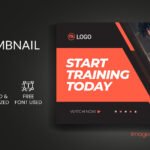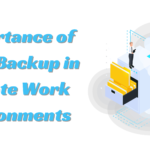How Drones are Changing the Agriculture Industry
An agricultural drone is an aerial vehicle that a human pilot does not operate. It is used to help improve farming operations, control crop growth, and enhance crop production. The drone’s sensors and digital imaging enable farmers to have a clearer picture of their fields.
Using an agricultural drone and collecting information from it can improve crop yields and make the farm more efficient. Agricultural drones also allow farmers to view their fields from the sky.
This view can show several issues like pest and fungal invasions, discrepancies in the soil, and irrigation problems. The drones capture multispectral images, those images that capture data within specific ranges of wavelengths across the electromagnetic spectrum.
Instruments sensitive to particular wavelengths detect the wavelengths. This type of imaging allows the farmer to extract additional information that the human eye fails to capture.
Multispectral images, along with a near-infrared view, show a visual spectrum view as well. This combination of views allows the farmer to see the differences between healthy and sick plants, which is a difference that is not always seen by the human eye.
Therefore, the combination of these views can help in analyzing crop growth and agricultural produce. In addition to this, the drones can take pictures periodically to help the farmer see the changes in crops over time.
How Drones are Changing the Agriculture Industry
Crop Tracking Drones
The main benefit of using crop management drones is that they are practical and easy to use to monitor crops on a large scale. Initially, satellite images were the only way to view a farm on a large scale and to spot any possible issues.
These images, however, were very costly and did not prove to be as accurate as the images drones can provide. Currently, farmers can receive live footage as well as time-based animation that shows what the crops will look like in the future.
Drone surveys and map areas allow farmers to make technology decisions using real data. The need for guessing and outdated images is now redundant as drones provide real-time data.
It is easier to determine a plant’s health using near-infrared drone sensors. These sensors show the absorption of light in plants, which can ultimately tell if a plant is healthy or unhealthy.
Agriculture drones can collect information on general plant and crop conditions, data on the distribution of land based on crop type, and the life cycle of crops, and they can also create a detailed map of the present area.
Additionally, drones can help farmers use land and resources efficiently and determine the finest locations for planting their crops.
Moreover, drones can adjust height, which enables them to scan the ground and spray accurately. This spraying can be completed much faster with drones than with traditional machines, and it also reduces the amount of chemicals in the groundwater.
Crops can be monitored better. Time-series animations can show a crop’s accurate growth and inefficiencies with production, allowing farmers to manage their crops more accurately.
By scanning a crop using visible and infrared rays, drones can identify which plants reflect different amounts of light. The information obtained can produce multispectral images, which then track changes in plants and show their health.
This allows for a quick way to monitor plant health, and farmers can apply remedies more precisely, saving an entire orchard. The plant’s ability to overcome infections is significantly increased.
In the event of crop failure, farmers can easily document losses more efficiently for insurance purposes.
Cattle Tracking Drones
Warm imaging in drones allows farmers to keep track of and manage livestock. Farmers can easily monitor their animals rapidly, and there is no need to hire extra people for this purpose.
Warm imaging also helps keep an eye out for any potential predators that can harm the animals or cause damage to the farm. This is an efficient way for the owners to be at ease all the time.
The drone operator can quickly check on the animals to see if any are missing or injured. Furthermore, drones enable farmers to keep a security check on their farms at all times.
Drones allow farmers to get real-time information on the whereabouts of their cattle and check if any animal is missing, injured, or giving birth. There is no need to pay a lot of money or spend too much time.
The need for human labour on machines such as trucks is eliminated as drones enable farmers to monitor their livestock while they are grazing. The drones’ thermal sensors can locate lost animals.
Furthermore, technological enhancements are being carried out that will enable drones to monitor individual animals. A tag number unique to an animal will alert the operator to the animal’s whereabouts.
Some tags can also keep track of behaviour patterns and check temperature to spot health issues in the animals.
Farmers can spot areas that are heavily grazed without having to relocate the animals. The images captured by the drones can help determine where fences can be built and where the cattle should be moved.
Cattle can be moved from areas by hovering the drone over them. The drone’s sound can cause them to move slowly in the direction the farmer wants them to. Stray animals can also be made to join the herd quickly.
How Drones Used in Agriculture Impact Farm Efficiency
The use of drones in agriculture can benefit farmers and other people involved in the farming industry in many ways. Drones can help maximize production.
Farmers can save a lot of time and money with the help of drones and are now able to gain more information and knowledge regarding crop growth patterns of different types of crops.
How do drones boost crop yields?
Using drones at the centre and end of the harvest cycle can simplify the acquisition of information on existing soil conditions. 3D guides of the land will assist ranchers with checking for potential issues regarding the soil’s nature. Additionally, it can help them track the administration of supplements and zones where the soil is dead.
The gathered information can permit farmers to receive the best planting designs. Additionally, they can deal with issues identifying with soil and yield the board. Ongoing observation will empower farmers to utilize water assets and permit them to deal with the supplement level of their harvests.
Planting by utilizing drones is a cutting-edge innovation, but numerous ranches don’t yet embrace it. However, most organizations in the farming business are exploring different avenues regarding drone planting. Producers are utilizing frameworks that can shoot seedpods into the dirt that is ready for planting.
This cutting-edge innovation is diminishing the requirement for the on-the-ground estate as the time has come when it will burn through, be costly, and require staff venture.
Crops require steady splashing and preparation to maintain significant returns. In past years, this was done physically, through planes or vehicles. However, these techniques were not very productive and were also costly.
Utilizing drones for showering manures, pesticides, and herbicides is a more straightforward and savvy technique. Robots can be customized to run self-rulingly on specific predetermined courses and timetables. An organism breakout can be treated by utilizing drones before it spreads across all the harvests.
Spot splashing used to be testing. If there were any issues with a specific yield or weeds, ranchers would need to splash the whole grounds. It was tedious and a misuse of valuable assets. Drones offering spot splashing can assist farmers with finishing this undertaking in considerably less time, with fewer assets and diminished expenses.
Drone studying and planning can help farmers or drone administrators check for possible dangers and empower them to make tech choices based on information that is accomplished continuously and not based on obsolete symbolism or mystery.
Robots can likewise assist with the water system. There are more odds of issues when you have numerous miles of the water system. Robots that have warm cameras can assist ranchers with thinking about problems in regard to spot water systems or territories where it is unreasonable or has almost no dampness.
This data can be utilized to boost waste. Preventing water pooling is fundamental, as it can harm delicate yields.
Drones for agriculture – the market size, drivers, and opportunities
The development of the market of drones for farming is around one point two billion US dollars to four point eight billion US dollars.
Because of the world’s growing population, tensions in the food supply worldwide, and expansion in subsidies for the improvement of future drones for farming are the key factors driving the development of the agrarian drone market.
Drones and the Future of Crop Production
The agriculture drone market size will outperform one billion dollars, and two hundred thousand units of drones will be delivered continuously in the coming years.
It is likewise asserted that there will be numerous mechanical progressions in the field of cultivating, and it would prompt expanding interest in drones. The absence of work and talented assets will likewise turn into the reason for drone use in cultivating.
Benefits of Drones in Agriculture
Drones have numerous advantages in farming. They empower farmers to screen their yields, animals, and general farm activities.
Drones’ advantages for crop management include battling crop diseases, assessing the condition of the soil, planting crops, agribusiness spraying, and harvest surveillance.
Furthermore, some advantages of drones for cattle management include monitoring the animals’ area, finding cows that are pregnant or conceiving offspring, distinguishing any expected dangers to the group, and spotting threats from animal hunters.
In addition to this, it is possible to observe the ailments of the animals and have manual and computerized cows counting programmable drones.

















